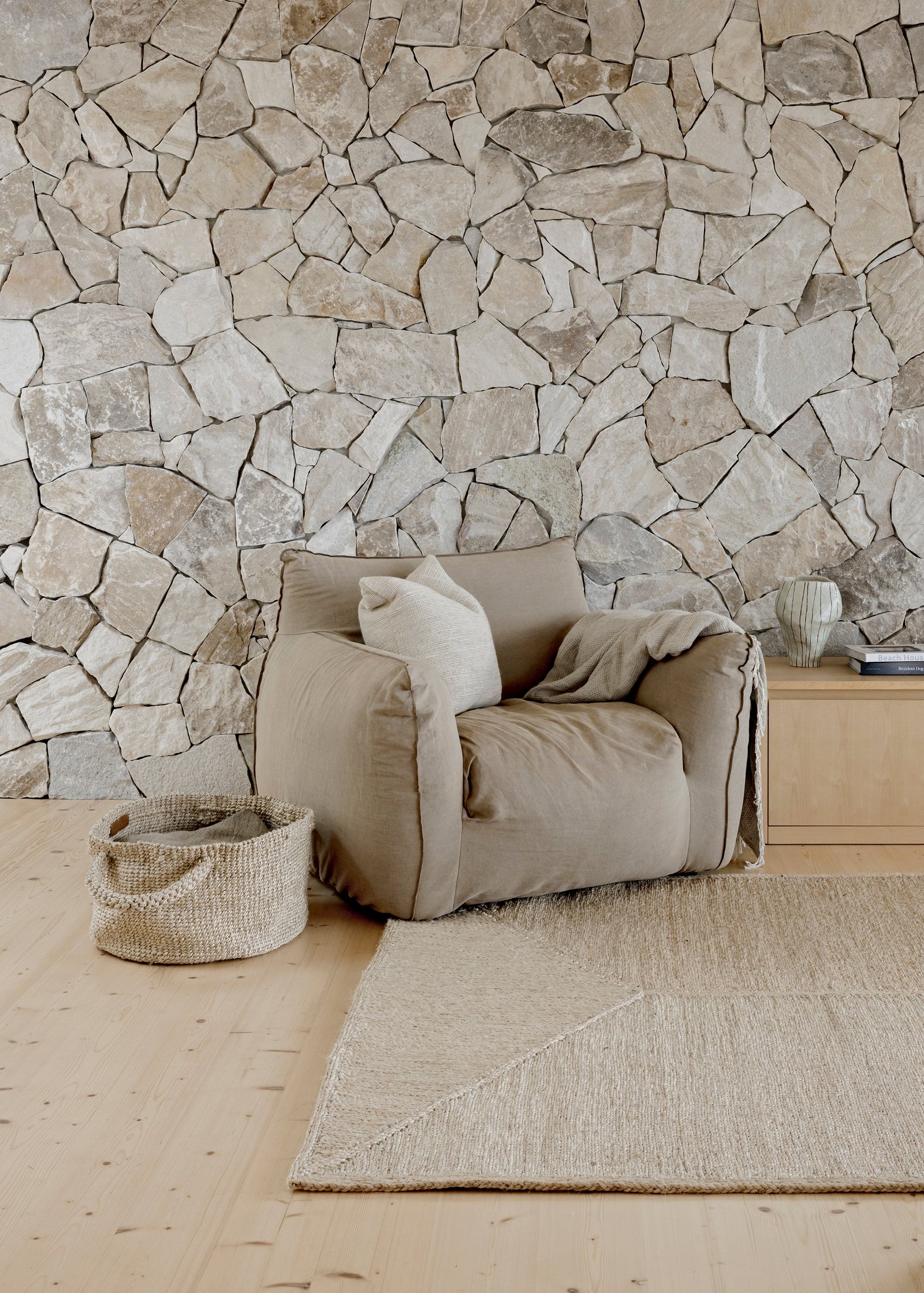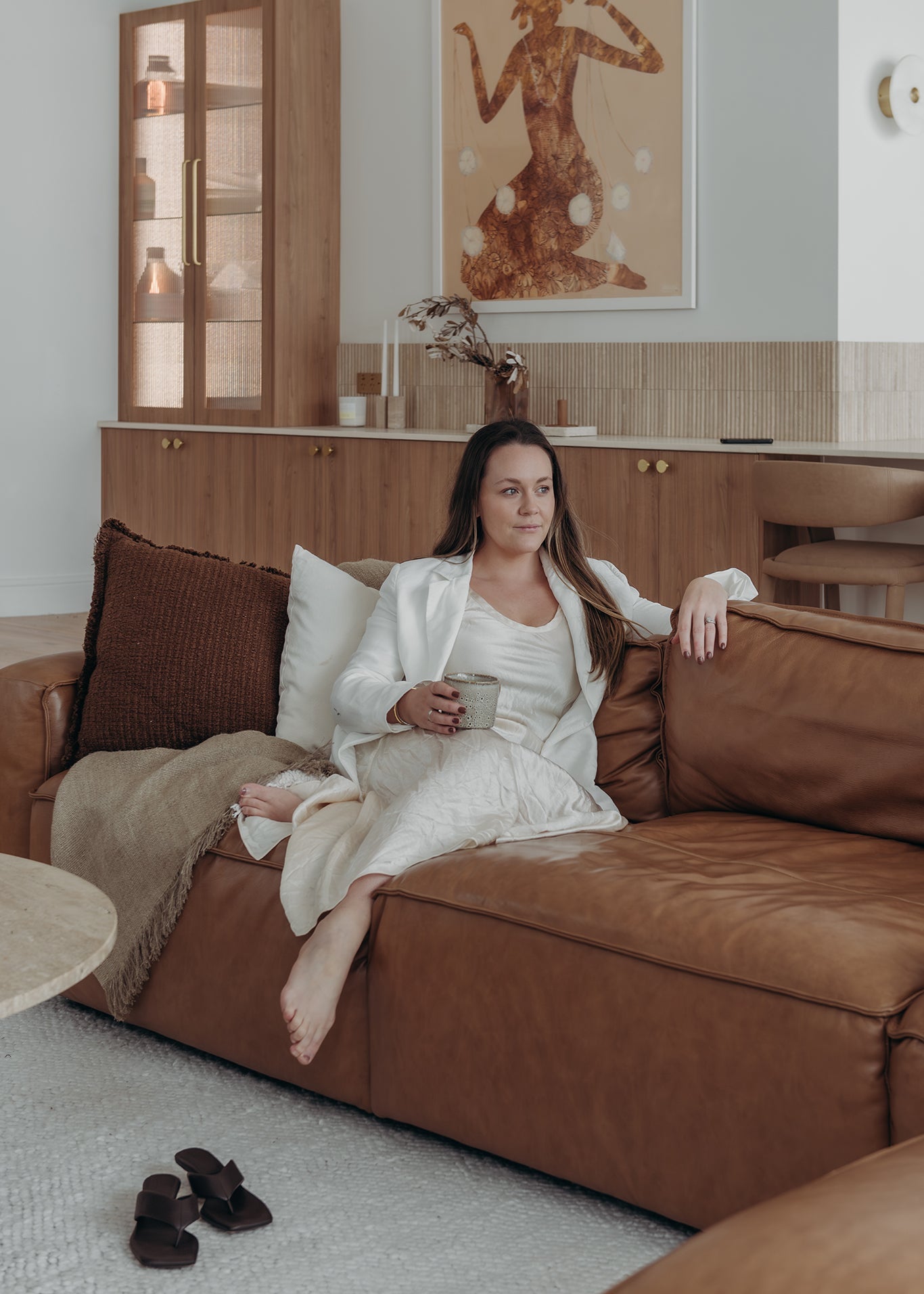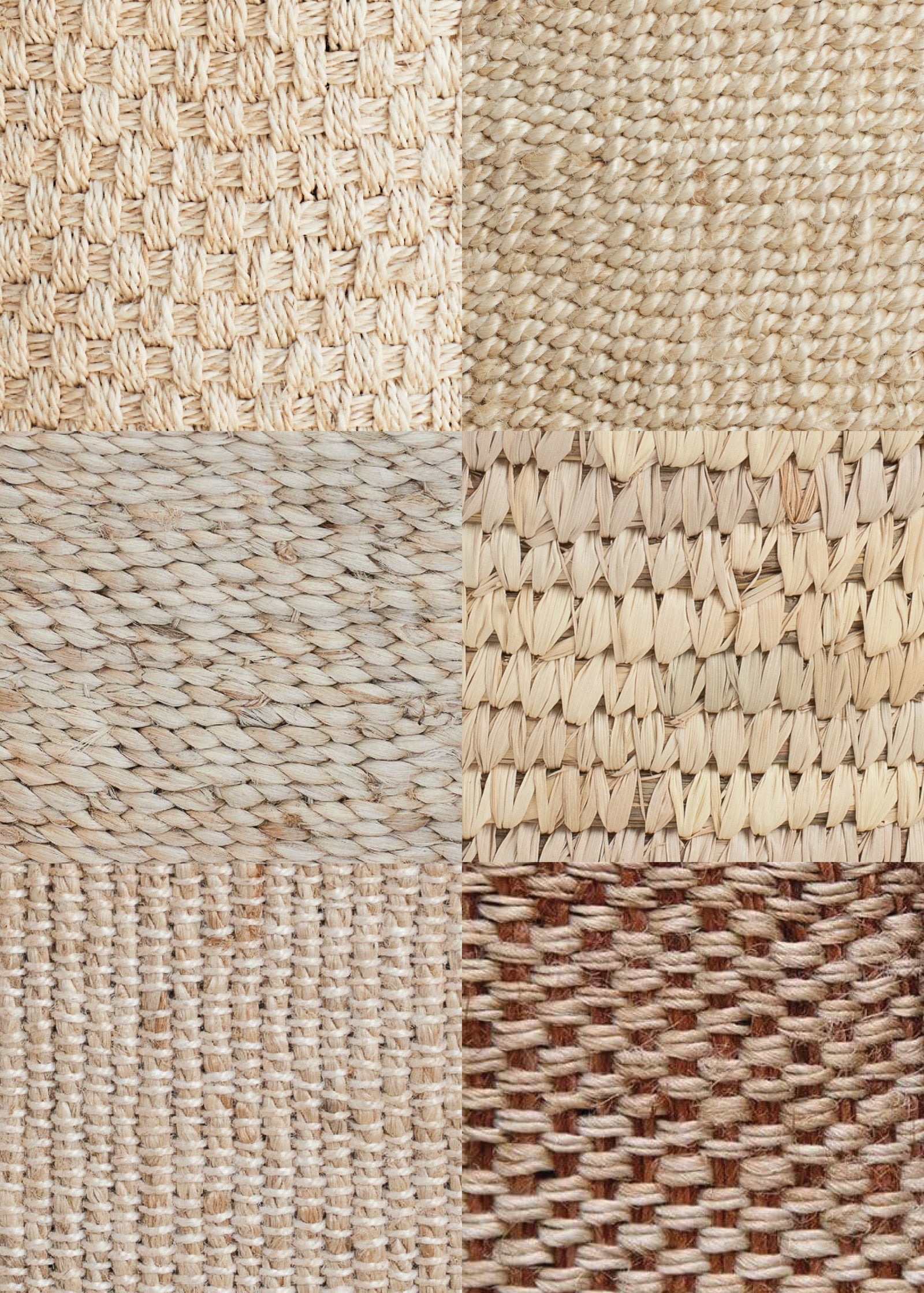FREE SHIPPING STOREWIDE | 3 DAYS ONLY | ENDS IN >
FREE SHIPPING ENDS >
Wall Art
Baskets
Rugs
TABLEWARE
Textiles
LIGHTING
DECORATIVE
BAGS
In Conversation with Stylist Natalie Walton

Natalie Walton has connected with The Dharma Door in may ways during the years. First, as a journalist, and then in her later roles as an accomplished stylist for both magazines and private clients, author, and most recently as the proud co-owner of Imprint House, a gift and homewares store she runs with her husband Daniel.
Over the years, Natalie's family and home life has also evolved, moving from the city of Sydney to a tree top hideaway in the beautiful Yarramalong Valley to the family's current base in the Byron Bay hinterland. It is the combination of these moves that has lead Natalie to question the meaning of style, sustainability and how well-selected, natural objects play into this whole picture. With an unquestionable ability to create environments that are both nourishing and brimming with visual affect, we were curious to know more about Natalie's approach, so took some time to delve a little deeper into the approach of this accomplished and thoughtful creative.
 How do you describe your style?
How do you describe your style?
Calm and considered. Ultimately, I create spaces that meet my needs - from both a functional and aesthetic point of view. I have four young children and am always working on several projects at once – from online courses to interior design – so it’s important that my home is a place where I can retreat and recharge. I don’t need any more stimulation in my life so that’s why I gravitate towards natural products and spaces.
What are some of your go-to approaches to achieving your desired aesthetic? What elements lay the foundation? What could you not do without?
I always start with the function of the space. While this might sound obvious, it’s easy to get distracted with grand visions. First I must meet my needs. If I’m creating a living space, there should be enough seats for everyone - and orientated towards the best view while still being in relation to each other.
And then I consider the materials - how will they make me feel? I also check in to see if they are practical - how will they wear over time? Then I consider style - will I still love this piece in 10 years’ time? Finally, the palette - how do these objects work together? Do they create harmony and contribute to the calm feeling I want to create in the space?

Descriptions of your work always reference timeless pieces, a neutral palette and natural materials. Can you share a little more about how you work with these elements when styling a home?
I always prioritise timeless pieces because I don’t have time to be overhauling my home every two years. I also believe it’s incredibly wasteful. I’ve been doing a lot of research on landfill and our culture of consumerism for my second book and it’s frightening how much waste we generate, all too often based on trends.
Generally I find that timeless pieces are neutral and embrace natural materials. But they also make me feel calm in a space. I tend to prefer lighter shades as I find darker pieces to be more demanding of our attention. Sometimes this can work well, and create a dramatic look. But at this point in my life I don’t need any drama!
What recommendations would you make to others who want to work these elements into their homes?
Walls and floors lay the foundation of every space. While I prefer white walls, flooring sets the tone for material choices in the rest of the space. Sometimes you have to work with what you’ve got. Other times you can refinish a floor. Our home has blackbutt timber, which we didn’t want to replace. It was in good condition but the finish was glossy - all those reflections are quite busy visually - and had also gone orange/red over the years. So we stripped it back and applied a water-based finish, which created more brown/grey tones. This became the starting point for the rest of the house.

You have spoken about style being an expression of self and an ‘outward expression of how we live our lives’, also describing style as ‘a powerful tool to live our best lives’. Can you share a little more about these beliefs, and how The Dharma Door followers might go about developing and refining their own personal style?
‘Style’ is a word that gets thrown around a lot and for my book This is Home: The Art of Simple Living I wanted to delve deeper into understanding what it is, how we develop it, and how we can express it in our homes. I did a lot of research and also travelled around the world visiting people who are considered 'style-makers' in places such as New York, Amsterdam, London and Marrakech, as well as many more cities and countries.
What I learnt is that style is an outward expression of our values. And the stronger the visual style, the more authentic a person is being to their beliefs. We are drawn to objects and visual forms because of how we connect to them through our lived history - our story.
That’s why style is so individual, because no one has lived our life. It is informed through where we grew up, the places we have visited, and the materials that we made connections with during our childhood and at seminal times in our lives.
We connect with materials because we have experienced them at some point, and an emotional touch point has been created. Our style is not a look, but an experience. So everyone already has a personal style - we just have to pay attention to how we respond to objects and materials and be true to ourselves.

How have pieces from The Dharma Door played a role in your interiors and shoots?
I have always loved using pieces from The Dharma Door in my home and interior projects because they strike a beautiful balance between form and function. The pieces are simple yet substantial. They are natural but also textural. Timeless while also being suitable for a more contemporary space. And each piece tells a story, which adds character to a home.
And what about your store, Imprint House - both online, and at your new location - Newrybar Merchants?
We are at an interesting cross-roads with retail. We have to ask ourselves are we adding to the problems of the world, or helping in some way. I created Imprint House to offer beautiful everyday essentials for the home. I have only ever been interested in timeless, natural pieces.
After recently travelling around the world to create my second book – which will be out in 2020 – I feel even more motivated to offer and promote sustainable wares and ways of living. During the trip I saw a sickening amount of plastic waste everywhere from New York to Puglia in Italy. Responsible retail has to be the way of the future. Right now we’re planning how we can make our best contribution.

What drew you to The Dharma Door’s products? What do you appreciate most about them?
The Dharma Door’s products have always held a special place in my heart. I have always appreciated the aesthetic of the range. But after I interviewed Shannon at an event a few years ago and heard the stories of the makers, and the positive impact that these products have on the lives of women in developing countries, I became a fan for life.
Living gently and respecting the environment is obviously an important part of your life. Can you share a little more about your approach, and how this plays into your preference for natural, handmade objects and conscious consumerism generally?
This journey began when I was working on magazines and I got to the point where I felt uncomfortable with the amount of ‘stuff’ that was sent to our office and gifted at press events. Plus, just being sent endless press releases of new products and seasonal updates many times a day, every day for five years became a put-off to consuming what I didn’t need.
A few years after leaving magazine publishing, I embarked on a tree change with my family and went through a process of culling all the pieces that we’d accumulated over the years - some of them were hand-me-downs, others pieces we’d held onto for the sake of holding them rather than using them. I also realised the items that I wanted to keep where all neutral in their palette and made from natural materials. This experience inspired the launch collection at Imprint House, which featured several products from The Dharma Door. Having a large family also plays into my preference for living simply at home. The more ‘stuff’ you have in your home, the harder it is to keep clean and tidy too.

And finally, you are the master of the hook. Your ability to style entryways and hangings racks is second-to-none. What’s your secret?
Ha! Thank you. I never realised this was a unique talent! I love order and calm and hooks are a great way to achieve that.
Images by Chris Warnes - supplied by Natalie Walton
Also in Journal
Notify me when available
We will send you a notification as soon as this product is available again.
We don't share your email with anybody












